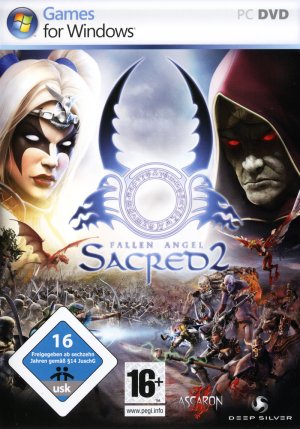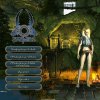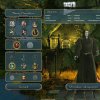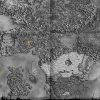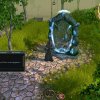Although Sacred 2: Fallen Angel is the successor to Sacred, the game takes place 2,000 years before Shaddar summoned the Sakkara-Demon. Set in Ancaria which is at the brink of another war, the player’s goal is to prevent this war. However, it’s entirely up to the player if the Light or the Chaos will prevail in the end.
All that just because of a godly energy called T-Energy. Once guarded by the Seraphim, then controlled by the High Elves, its exploitation was highly debated even among the High Elves, while more and more resistance began to form. In the end, what was feared to happen, happened: the big war started. Dragonkins, Temple Wardens, Humans, and Orcs fought side by side against the High Elves, but their power was already too great. After all of Ancaria was completely destroyed, they remained in control over the T-Energy. In the end even the remaining High Elves left their old home and built a new empire completely based on the powers of the T-Energy and inside that new home the tension between the high nobility and the clergy is escalating.
Meanwhile, the constant exploitation of T-Energy continues to contaminate whole zones and the once godly power now turns every living thing in these areas into terrible monster-mutations that destroy everything in their path.
In the beginning of the game, the player can choose between six characters of which only the Seraphim, a solid all-around character, has remained from the first game. The other five are all-new classes, such as the Dryads, masters of long-range combat and nature magic, or the Inquisitor which is somewhat an opposite to the Seraphim in all traits. Some of the class choices also effect the two campaigns and which available six gods the player may choose from. While the Seraphim can only tread on the path of Light, the Inquisitor is damned to walk the path of Chaos and has no access to the gods of light, nature, and philosophy.
While the choice of Light and Chaos effects how the campaign and its main quest ultimately play out, the gods each grant the player access to a very powerful spell. The god Testa for example, loads the hero up with T-Energy and allows the hero to shoot energy balls that heal friendly units and damage the enemies. However, as these spells are so powerful, they also have a very long cooling down period and should be used only as a last resort or against very powerful foes.
Once a character has been created, the game plays very much as the original game: the player takes on quests and kills creatures for experience points, loot to gain levels, and get more powerful. At each level the player is awarded with a skill point which the player can then invest in four different areas like defensive skills or class exclusive martial arts skills. From the 27 available skills, the player can choose up to ten and level them up. In addition, the player will find runes during travels.
These runes provide and level the talents of the characters. Once a spell or ability has been learned from a rune, learning it again will increase the level of the corresponding spell or ability until it is the same as the current character level. If the player finds runes for different characters or wants to specialize specific talents, the player can go to a rune master to trade in up to four runes and a good amount of gold for a rune of the desired talent. It’s also possible to arrange the talents into powerful combos defining which spells or attacks should be used in which order. The more powerful the inserted talents are, the longer the cooling down period for the combo will be.
The game also features an extensive multiplayer mode allowing players to play on PvE or PvP servers or play the campaign in a local network (only one game copy required for two players), an open network (allows single player characters to be used) or a closed network similar to the Battle.Net.
